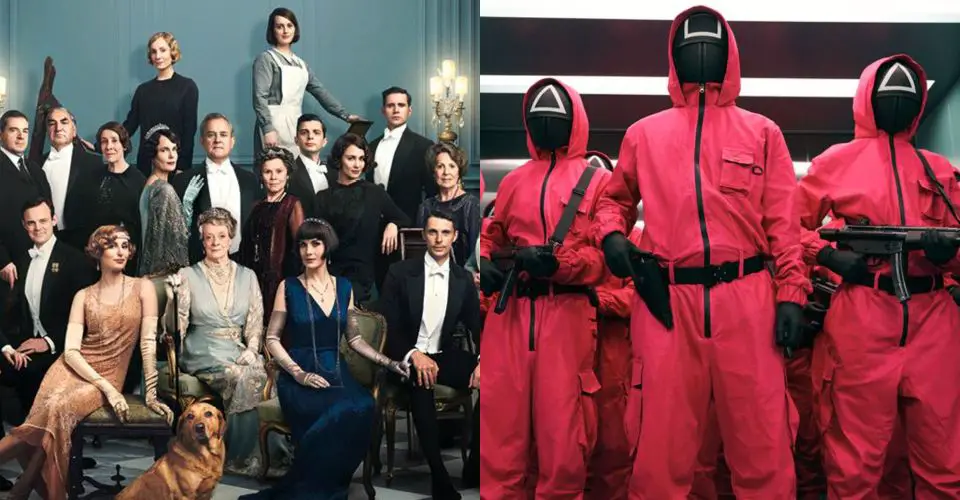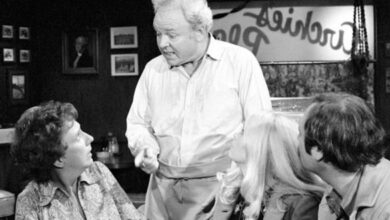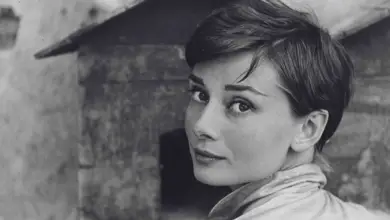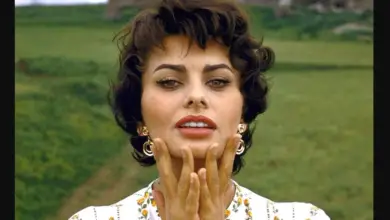Elizabeth Taylor obituary
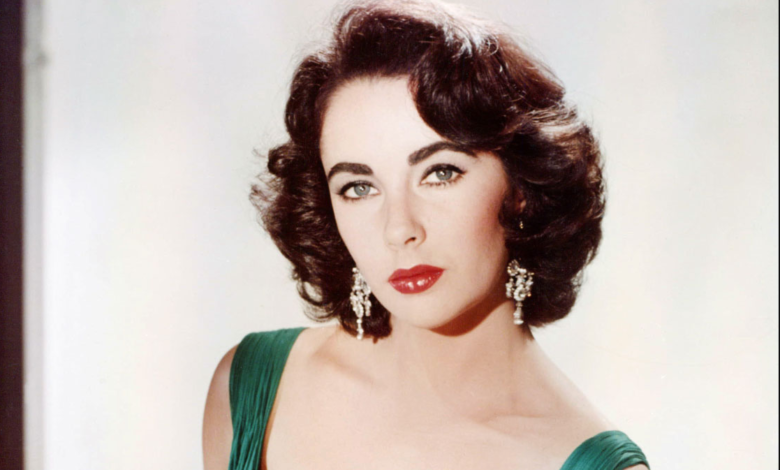
The film star Elizabeth Taylor, who has died of heart failure aged 79, was in the public eye from the age of 11 and remained there even decades after her last hit movie. She managed to keep people fascinated, by her incandescent beauty, her courage, her open-natured character, her self-deprecating humour, her eight marriages (two of them to the actor Richard Burton), her many brushes with death, her seesawing weight, her diamonds and her humanitarian causes, all of which often obscured the reason why she was famous in the first place – she had a tantalising screen presence, in films including A Place in the Sun (1951), Giant (1956), Cat On a Hot Tin Roof (1958), Butterfield 8 (1961), Cleopatra (1963) and Who’s Afraid of Virginia Woolf? (1966).
Taylor was born in Hampstead, north London, of American parents. Her mother, Sara, was a former stage actor and her father, Francis, an art dealer. As soon as she could walk she was given ballet lessons, and at the age of three she danced with her class in front of the royal family. In 1939, a few months before the outbreak of war, the family moved to Hollywood, where her father opened an art gallery much patronised by the film colony. The beauty of the owner’s dark-haired, violet-eyed young daughter won almost as much praise as the paintings on the walls, and she was soon making her screen debut, at the age of 10, in There’s One Born Every Minute (1942), at Universal.
But it was MGM who launched her career proper with Lassie Come Home (1943), and for whom most of her films were made. When Sara Taylor heard that the studio was looking for a young girl to play Velvet Brown, who wins the Grand National disguised as a boy in National Velvet (1945), she brought her daughter to see the producer Pandro S Berman. He thought her too thin and fragile for the part, although she could ride well. But three months later, after rigid training from her mother, she was able to change Berman’s mind. Her performance, in which she radiates youth, is enjoyed perennially.
Meanwhile, she was struggling to get an education at the Hollywood school, where she developed a crush on an older pupil, John Derek, the first recorded instance of her interest in the opposite sex. At 17, she was despairing about getting much schoolwork done while making Conspirator (1949), in her first “adult” role. “How can I when Robert Taylor keeps sticking his tongue down my throat?” When the eccentric RKO boss Howard Hughes became interested in her, he sent his lawyer to Mrs Taylor with an offer of $1m to arrange a marriage with her daughter. At being told of the offer, Elizabeth laughed out loud.
Her debut marriage was to Nicky Hilton, the 23-year-old playboy son of the hotel magnate Conrad Hilton, in 1950. It seemed a fairytale romance, ideal fodder for the glossy fan magazines, as both were young, attractive, rich and pampered. MGM took advantage of Hollywood’s biggest wedding of the year by releasing Vincente Minnelli’s delightful comedy Father of the Bride (1950), in which Taylor played the bride and Spencer Tracy was the father, at around the same time.
Advertisement
After the genuine marriage ceremony, Taylor whispered to her mother, “Oh, mother! Nick and I are one now, for ever and ever.” “For ever and ever” turned out to be eight months. According to her testimony at the divorce proceedings, Hilton had ignored her during their long European honeymoon, drank heavily and abused her in public. He complained, “I didn’t marry a girl. I married an institution.”
The “institution”, still in her teens, in ravishing close-ups, was now driving Montgomery Clift to murder his pregnant girlfriend in George Stevens’s A Place in the Sun. “Liz is the only woman I have ever met who turns me on,” remarked the gay Clift. They were to become close friends and, during the making of Raintree County in 1957, she was the first on the scene of Clift’s car crash, pulling a dislodged tooth out of his throat to stop him choking. Two years later, she insisted that the scarred and drug-addicted Clift be cast with her in Suddenly, Last Summer (1959), an adaptation of a Tennessee Williams play.
In due course, she met the sophisticated British actor Michael Wilding, 20 years her senior. She was playing Rebecca in Ivanhoe (1952) in England when she proposed to him. Ironically, MGM had given her the role abroad as a means of breaking up her affair with the director Stanley Donen. Taylor and Wilding were married in 1952, at a London registry office. Her sons, Michael and Christopher, were both born by caesarean section, in 1953 and 1955 respectively. By 1956 the marriage began to totter.
She was 24, and becoming one of the most sought-after stars in Hollywood, especially after her performance in Stevens’s Giant, during which she formed warm relationships with her co-stars, Rock Hudson and James Dean. Wilding was middle-aged and his career was fading, although she got him an MGM contract. Clearly the age gap, which Taylor had insisted was unimportant at the outset, played an important part in the break-up of the marriage, and they agreed to an amicable divorce.
Ironically, the man she was to marry next was five years older than Wilding. But the flamboyant impresario Mike Todd (real name Avrom Goldbogen), the begetter of Around the World in 80 Days (1956), was noted for his youthful spirit and his abundant energy. At their wedding in Acapulco in 1957, Mike’s lifelong friend, the crooner Eddie Fisher, was best man, and Eddie’s wife, Debbie Reynolds, was the matron of honour. In the same year, a daughter, Liza, was born, also by caesarean, and both mother and child nearly died. Taylor was advised never to have another baby.
A mere seven months later, Todd’s private plane, Lucky Liz, in which he was flying to New York, crashed in a storm near Albuquerque leaving no survivors. Taylor had wanted to accompany her husband on the flight but she was persuaded to stay at home because of a flu virus. On hearing of the crash, she screamed so loudly that neighbours a few doors away could hear her, and she had to be drugged to prevent her from taking her own life.
Advertisement
Gradually, Taylor came out of seclusion and completed Cat On a Hot Tin Roof, another Williams adaptation, which she had already been filming when Todd was killed. Despite, or because of, her state of mind, she gave one of her most finely wrought performances as the sexually frustrated Maggie. Her voice, never her strong point, seemed to have gained in power, and she matched Paul Newman and Burl Ives blow for blow.
The film’s box-office potential was increased further by the gossip surrounding Taylor and Fisher. Taylor, who had been cast as the grieving widow, now found herself in the role of the vamp who wrecked the Fishers’ apparently idyllic marriage. The outraged moralistic public was unaware that the Fisher-Reynolds marriage was already in tatters. In 1959, Taylor, who had converted to Judaism when she married Todd, married Fisher at a synagogue in Las Vegas.
Taylor was in London where she was completing Suddenly, Last Summer (in which she brilliantly played Katharine Hepburn’s mentally-disturbed niece), when the producer Walter Wanger offered her the title role in Cleopatra. The star half-jokingly told him that she would do it for $1m against 10% of the gross. To everyone’s astonishment, 20th Century-Fox agreed to her terms, making her the highest-paid performer for a single film in the history of Hollywood to that date. As she said, “If someone’s dumb enough to offer me a million dollars to make a picture, I’m certainly not dumb enough to turn it down.”
When filming on Cleopatra started at Pinewood studios, Peter Finch was Julius Caesar and Stephen Boyd was Mark Antony, although neither of them was to see their leading lady for more than a month. Taylor was first stricken with a cold, then a fever, then an infected tooth. In March 1961, she was rushed to a London clinic with lung congestion. She was given a tracheotomy that helped her breathing, but for days she was on the danger list. After some time in a coma, she began to rally. Her physicians announced, “She has made a very rare recovery. Miss Taylor is a woman of great courage. She put up a wonderful fight.”
In the spring, Taylor won her first Oscar, after three consecutive nominations for best actress in a leading role (in Raintree County, Cat On a Hot Tin Roof and Suddenly, Last Summer), for her role as a high-class hooker in the 1960 film Butterfield 8, an adaptation of John O’Hara’s novel. Overnight, she had regained the affection of the fickle industry and public. Taylor herself thought the Oscar was a consolation prize for not dying and that the film “was a piece of shit”.
As for Cleopatra, the whole project was shipped to Rome, and Finch and Boyd were replaced by Rex Harrison and Burton. Taylor arrived in Rome with a large entourage consisting of one husband, three children, five dogs, two cats, various secretaries and dozens of servants, and settled at the Villa Pappa, a 14-roomed mansion off the Via Appia.
Advertisement
“There comes a time during the making of a movie when the actors become the characters they play,” Wanger noted in his diary. “The cameras turned and the current was literally turned on. It was quiet and you could almost feel the electricity between Elizabeth Taylor and Burton.”
After the first “electric scene” they performed together, Burton, who was married, frequented the villa in the evenings. On one particular occasion, while Burton was regaling the guests with stories, Fisher went to the piano and started playing and singing loudly. Finally, Taylor yelled, “Shut up, Eddie! We can’t talk!”, whereupon the jealous crooner slammed down the lid of the piano and strode into the next room. A few moments later, Fisher’s records were blasting through the house. Taylor covered her ears while the guests departed, diplomatically.
“I’m afraid at first it was lust, and then I got to know her and it was love,” Burton recalled. Throughout the shooting, to avoid the constant prying of the paparazzi, the celebrated couple would escape to a cheap one-room apartment on the beach. Finally, weary of subterfuge, they decided to be seen publicly in the Via Veneto. The Vatican talked of “this insult to the nobility of the hearth”, and Ed Sullivan on his TV show said, “You can only trust that youngsters will not be persuaded that the sanctity of marriage has been invalidated by the appalling example of Mrs Taylor-Fisher and married man Burton.”
After Cleopatra, Burton and Taylor announced that they would make another film together, originally to be called International Affair. The title was changed to The VIPs. During the filming in London, Cleopatra opened to mixed reviews. Audiences were disappointed that the love scenes between Taylor and Burton that had been the talk of modern Rome were not repeated with so much passion in those of ancient Rome. But public interest in the couple’s private lives still made the film a top earner of 1963.
The affair continued in the public eye, while both Fisher and Sybil Burton held out for the best possible divorce deals. Finally, Sybil Burton gave in, claiming cruelty and that her husband was “in the constant company of another woman,” which Newsweek called “the throwaway line of the decade”.
Burton and Taylor were married in March 1964 by a Unitarian minister at the Ritz-Carlton in Montreal. She wore a pale yellow Irene Sharaff gown, and a $150,000 emerald and diamond brooch that Burton had bought her at Bulgari in Rome. The bride and groom gave their respective religions as Jewish and Presbyterian.
The scandal over, public interest in them only seemed to increase. The world’s most famous couple had become celebrities rather than actors. “I want to be known as an actress,” Taylor told the New York Times in 1964. Unfortunately, their reputations as serious actors were not much enhanced by the next film they made together, the limp soap opera The Sandpiper (1965). After their three less than convincing films together, it was fortunate that their credibility as performers was soon brilliantly restored by Who’s Afraid of Virginia Woolf? for which Taylor won her second Oscar, playing the bitter, 52-year-old, vulgar wife of a self-loathing professor (Burton). It was Taylor’s ability to get into the skin of the character, more than the padding and a tousled salt-and-pepper wig, which transformed the legendary beauty into a blowsy virago.
Advertisement
Following the film, the couple appeared on stage, without payment, at Oxford University, for five sold-out performances of Christopher Marlowe’s tragedy Dr Faustus, the proceeds of which were to go to build an Oxford University Theatre Centre. Burton played the title role, while Taylor was the four-minute wordless apparition of Helen of Troy.
Burton continually claimed that Taylor had taught him how to act on film: “That girl has true glamour. If I retired tomorrow, I’d be forgotten in five years, but she would go on forever.” Despite their genuine affection for one another, their open quarrels earned them the nickname of “the Battling Burtons” throughout the 1960s. This was cleverly exploited when they fought lustily – she as Katherina, he as Petruchio – through Franco Zeffirelli’s bustling, colourful version of The Taming of the Shrew (1967). They also co-starred in The Comedians (1967, from Graham Greene’s novel) and Boom (1968, another Williams adaptation) which allowed them to work in West Africa (standing in for Haiti in the former film) and Sardinia.
As the Taylor-Burton circus moved from country to country, their way of life, which the New York Times likened to the court of Louis XIV, became ever more lavish. In the consciousness-raising late 1960s, younger people especially began to find them vulgar and frivolous, and their films irrelevant. Taylor’s elder son, Michael, would become a hippie and live in a commune in Wales “in order to get away from all those diamonds”, according to the Daily Mirror.
“Those diamonds” included the 33.19-carat Krupp diamond that Burton bought Taylor for more than $300,000 in 1968; a $1.5m Cartier diamond set in a necklace of smaller diamonds, and the much-publicised heart-shaped diamond pendant Burton gave her for her 40th birthday. It had first been given by the Emperor Shah Jehan (the builder of the Taj Mahal) to his young bride in 1621, engraved with the message “Eternal Love Til Death”. In fairness, the Burtons were equally generous in giving vast sums to worthy causes. In 1966, Taylor established a heart disease research foundation in memory of Clift and endowed it with $1m.
While Taylor’s looks and spunky performances still gathered praise in films such as John Huston’s Reflections in a Golden Eye (1967), Burton, who was now drinking heavily, became an object of derision. The marriage broke down and, in June 1974, Taylor divorced Burton in Switzerland. “There were too many differences. I have tried everything,” she told the court.
Yet they were reconciled in August 1975, attracting as much attention as ever. On a visit to South Africa in the autumn, an X-ray of Taylor’s chest showed two spots on her lungs. Terrified, Burton and Taylor clung to each other all night, she gave him valium, and he whispered poetry in her ear. In the morning, she was told she did not have cancer. In his joy, Burton proposed remarriage. The ceremony took place on the banks of a river in Botswana. A few months later, they were again filing for divorce.
Advertisement
Taylor soon met John Warner, former secretary of the navy to President Gerald Ford, and they married in 1976. She became a political wife, campaigning hard to get her husband elected to the Senate by attending endless charity benefits, shaking hundreds of hands, and speaking at public functions. “It was so boring. That’s why I put on so much weight,” she confessed.
She therefore decided to return to acting, on Broadway, as the vixen Regina Giddens in Lillian Hellman’s drama The Little Foxes, which she also played at the Victoria Palace theatre, London, in 1982 to mixed reviews. But, with her career in full swing again – and solo – she was not content to be kept down on the farm in Virginia. She and Warner divorced in 1982.
After creating a minor sensation by appearing in several episodes of a daytime TV soap opera called General Hospital, opposite a new beau, Tony Geary, the unsinkable double act of Burton and Taylor resurfaced again. They starred together in Noël Coward’s Private Lives in New York at a fee of $7,000 a week each, making the ticket prices the most expensive in Broadway history for a non-musical.
The long-running romance ended at Burton’s death in August 1984. Taylor stayed away from his funeral so as not to turn it into a media circus. But a few days later, she stood stricken with grief at the graveside of the man with whom she had shared the limelight for more than two decades. In 2010 she allowed love letters between them to be published and said: “Richard was magnificent in every sense of the word. We were always madly and powerfully in love.”
How different was her marriage in 1991 to Larry Fortensky, a construction worker 20 years her junior whom she met while being treated at the Betty Ford clinic. The vast differences between them doomed the marriage from the start, but Taylor always claimed that, with very few exceptions, she could not have sex with a man unless she was married to him.
Five years later, she was a single woman again and threw herself into charitable work, especially her campaign for Aids awareness, motivated by her affection for Hudson, who died of an Aids-related illness in 1985. In 1997, Taylor’s health again hit the headlines when she had an operation for a brain tumour, and had to shave off her hair. She survived because of “her will to live, and her millions of fans willing her to do so”, according to her friend Michael Jackson, who was at her bedside. In 2005 she was a vocal supporter of Jackson during his trial on charges of sexually abusing a child, of which he was acquitted, and after his sudden death in 2009, she said, “My life feels so empty. I don’t think anyone knew how much we loved each other.”
Although there were recurring rumours that she was to marry her constant companion Jason Winters, she dismissed them, saying she would never marry again.
Taylor, who was made a dame in 2000, is survived by her brother, Howard; two sons, Michael and Christopher, from her marriage to Wilding; her daughter, Liza, from her marriage to Todd; her and Burton’s adopted daughter, Maria; and 10 grandchildren.
Elizabeth Rosemond Taylor, actor, born 27 February 1932; died 23 March 2011

